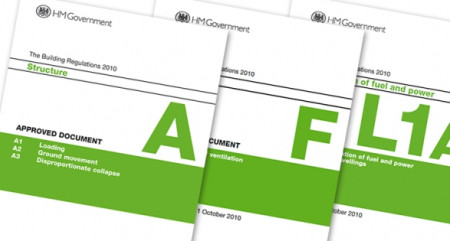
So what's changed?
The most important change has two ‘principal duty holder’ roles introduced into the Building Regualtions: the Principal Designer and the Principal Contractor. Anyone familar with the construction industry will know these roles are nothing new because they were first introduced into the CDM Regs under the 2015 changes. But where the roles under the CDM Regs concern themselves with ensuring that construction projects are designed and managed without risks to the health or safety of those who build, use and maintain them under the Health and Safety Act, the roles under the Building etc (Amendment) (England) Regulations 2023 have somewhat different meanings.
Firstly, the Principal Designer will be required to ‘plan, manage and monitor the design work during the design phase’ and to ‘co-ordinate matters relating to the design work comprised in the project so that all reasonable steps are taken to ensure that the design is such that if the building work to which the design relates were built in accordance with that design the building work would be in compliance with all relevant requirements’.
These relevant requirements are defined, and include those listed in Schedule 1 to the Building Regulations 2010,5 from Part A – Structure, through to Part S – Infrastructure for the Charging of Electric Vehicles, as well as Regulation 7,6 governing materials and workmanship. Critically, materials must be appropriate for the circumstances in which they are used, so as to adequately perform the functions for which they are designed.
Secondly, the Principal Contractor will be required
Why so serious?
In the aftermath of the Grenfell Tragedy, Dame Judith Hackitt was tasked with chairing an Independent Review of Building Regulations. As part of her findings she called for a more ‘robust ownership of accountability’ under her Building a Safer Future review, to regulate what was seen as an increasingly fragmented industry with design responsibilities split across multiple parties.
And what does all this mean for you?
If you're extending your home or building a new-build house, then under the regulations your duties mean that you must:
- provide building information and pre-construction information as soon as is practicable to every designer and contractor appointed, or being considered for appointment, on the Project.
- cooperate with any other person working on or in relation to the Project to the extent necessary to enable any person with a duty or function under the regulations to fulfil that duty or function.
Your other duties, such as making suitable arrangements for planning, managing and monitoring the project will be carried out on your behalf, and these duties include ensuring that:
- design work is carried out so that the building work to which the design relates, if built, would be in compliance with all relevant requirements.
- building work is carried out in accordance with all relevant requirements
- designers and contractors working on the Project cooperate with each other to ensure compliance with all relevant requirements
- design and building work is periodically reviewed to identify whether it is higher-risk building work
- building work can be carried out, so far as reasonably practicable, without risks to the health and safety of any person affected by the Project
- facilities required by Schedule 2 of the CDM Regulations are provided in respect of any person carrying out construction work.
It's important to remember that if there's only one contractor on your project then these duties must be undertaken by that contractor. However, if there's more than one contractor, these duties must be undertaken by the Principal Contractor.
Equally, if there's only one designer on your project then they will take on the role of principal designer. But, if there are multiple designers then a you must select which consultant will act as Principal Designer and notify all parties of the decision in writing.
Conclusion
It's fair to say that these changes will take some time for everyone to get to grips with. It's also important to stress that the above isn't an exhaustive overview of all changes that have come into effect, and there are various levels of compliance dependent upon the nature of your role in the project and the nature of the works proposed.
So be sure to ask if you're unsure, and remember that we're happy to help, just get in touch to discuss and we'll offer whatever clarification we can.
S40